Raw turnips with acorn oil might sound like something you'd be served during winter in a Polish Gulag, but I can assure you, it's a far cry from a punishment.
The idea for this came from a couple different places, but the most inspirational was a book many of you will know (and love): The Little House on the Prairie series, with the passage that inspired this post coming right from On The Banks Of Plum Creek.

"....it was good to know that there were turnips enough in the cellar to last all winter long. There would be boiled turnips, and mashed turnips and creamed turnips. And in the winter evenings a plate of raw turnips would be on the table by the lamp; they would peel off the thick rinds and eat the raw turnips in crisp, juicy slices".
Turnips are an incredible crop, and a well known one to people in cold weather climates like my ancestors from Scandinavia. Long before the potato was imported from the Americas and became the root/tuber crop of choice, brassicas like cabbage and turnips reigned. Turnips are hardy, they can withstand grasshoppers and insects during the growing season, and will even benefit from a little frost once the weather gets cool. They're a dual crop too, since the greens can be harvested here and there throughout the growing season while the roots grow, just as long as too many aren't harvested which would hinder the photosynthesis the roots need to grow.
Another thing to unpack from the book entry I think it's important to note is the last sentence, specifically the word juicy. When you think of root vegetables like carrots, potatoes, beets and most importantly rutabaga (which are related to turnips more closely than the aforementioned) the word juicy probably isn't the first thing that comes to mind. But, one slice of a raw turnip, plucked from the ground, cleaned, pared, and cut into slices will show you it's true. A raw turnip is a juicy, delicious thing, and, dipped in oil and sprinkled with salt, they make a good, minimalist appetizer.
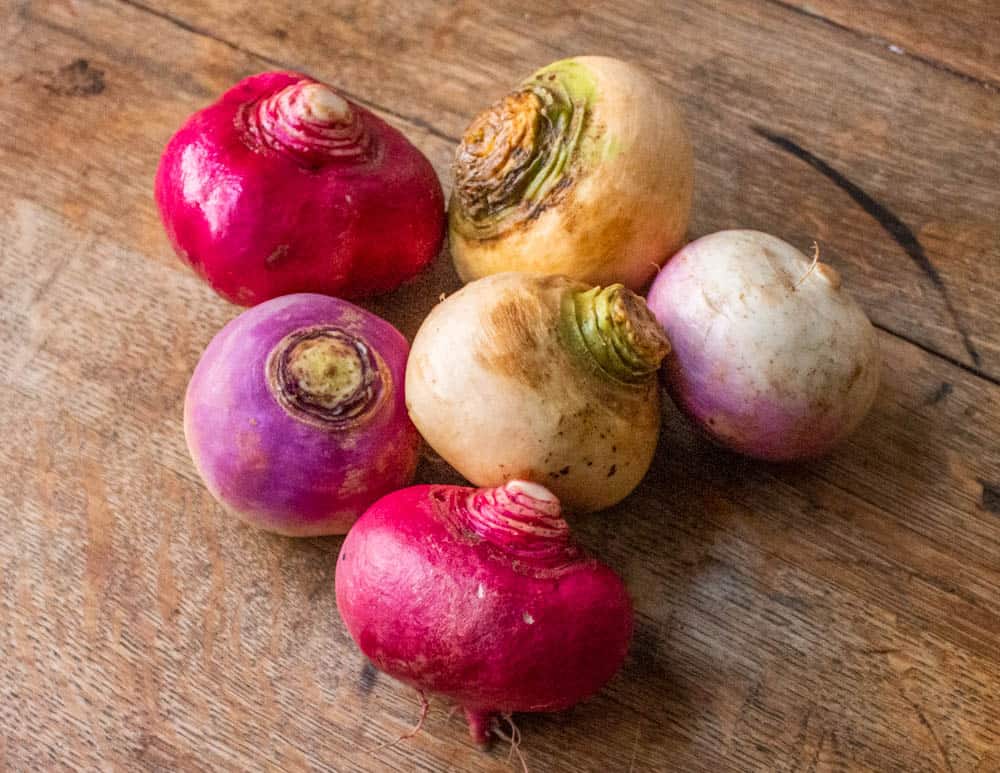
Turnip varieties: Scarlet, Purple Top, and Golden
Another thing about turnips we don't mention often is that there's multiple varieties. Most of us will know the common purple top turnip, but there's also the blushing scarlet turnip, as well as yellow or golden turnips, and, the newest to the fold, which are the delicate, small, crisp and mild Japanese or Hakurei turnips. All of those would be fine here, but I really prefer the rustic storage varieties like yellow, purple top, and scarlet, the scarlets being the sweetest of the ones I've had.
 Acorn Oil
Acorn Oil
Besides some good turnips, the other important thing here is the oil. You want to use the best tasting oil you can find here. Extra virgin olive oil would be fine, but nut or see oils are great too. I was lucky enough to have some extra water oak acorn oil around from a speaking event that got cancelled this year, so I used that, as much for the flavor as that more people need to know about the product. And yes, you read that right: acorn oil. In short, acorns are bitter, and need leaching, but acorns are also high in oil, and the tannins that make the nuts bitter aren't fat soluble. Native Americans knew this, and would boil the nuts (as well as bitternut hickory) to extract the oil.
Sam Thayer and his team over at Foragers Harvest are resurrecting the millenia-old tradition of harvesting the oil from acorns and bitternut hickory nuts. If that wasn't cool enough, they're producing enough of the oil to sell on a commercial scale, and you can taste it yourself. Sure, the oil is spendy (1 qt of acorn oil will probably run you about 45$) but considering the amount of labor that goes into it since the nuts have to all be harvested by hand, it's a deal, and you get to support a small business doing really cool things with your money, instead of sending it off to Timbukto to some large company.
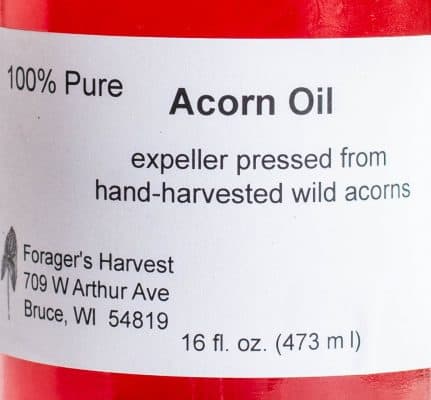
Whether you dip turnips in it or not, acorn oil is worth seeking out. It's worth mentioning that the oil pictured here is my favorite of all the acorn oils they produce: the red acorn oil. The water oak (a species of red oak) unlike something like say, a white oak, makes acorns that produce a brilliant red oil that looks like it was colored with paprika. Like all the acorn oils of theirs I've tasted, it has a mild, buttery acorn flavor, with the bonus that the red oil will impart it's color to food. Whenever I know some of the red acorn oil is in stock I make sure to order some since it's not always available—there's been years in-between harvests in the past, probably due to the oaks mast cycle and availability of harvesters.
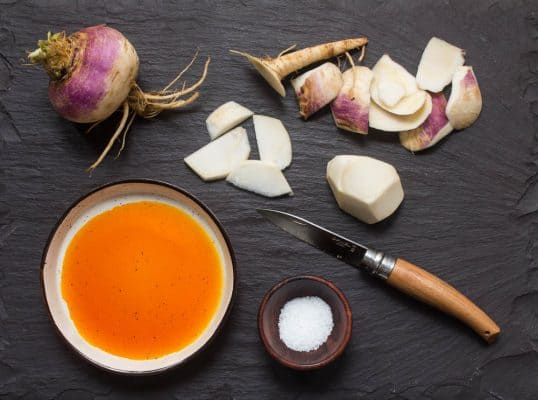
For more fun recipes like this, you'll want to check out the Little House Cookbook. I highly recommend it for anyone who read the books.
Raw Turnips with Acorn Oil and Salt
Ingredients
- Turnips preferably purchased from a coop or freshly dug, avoid turnips covered in wax as they're not as fresh and are inferior in flavor
- Crunchy salt such as Maldon, Faulk, or just Morton Kosher in a pinch, to taste
- Fresh ground black pepper to taste
- Best tasting oil as needed
Instructions
- Peel or pare the turnips, moving through the outer skin and inner layers to reveal the tender, juicy heart.
- Cut the turnips into roughly ¼ inch thick slices, wedges, or whatever shape you prefer.
- Arrange the turnips on a plate, with a small bowl or ramekin of the oil and a bowl of salt alongside.
- Dip the turnip slices into the oil, sprinkle with salt, and eat.

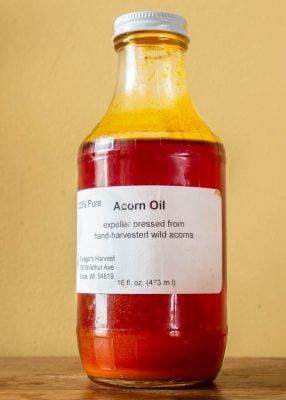 Acorn Oil
Acorn Oil 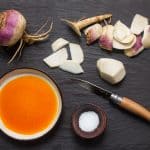
Leave a Reply